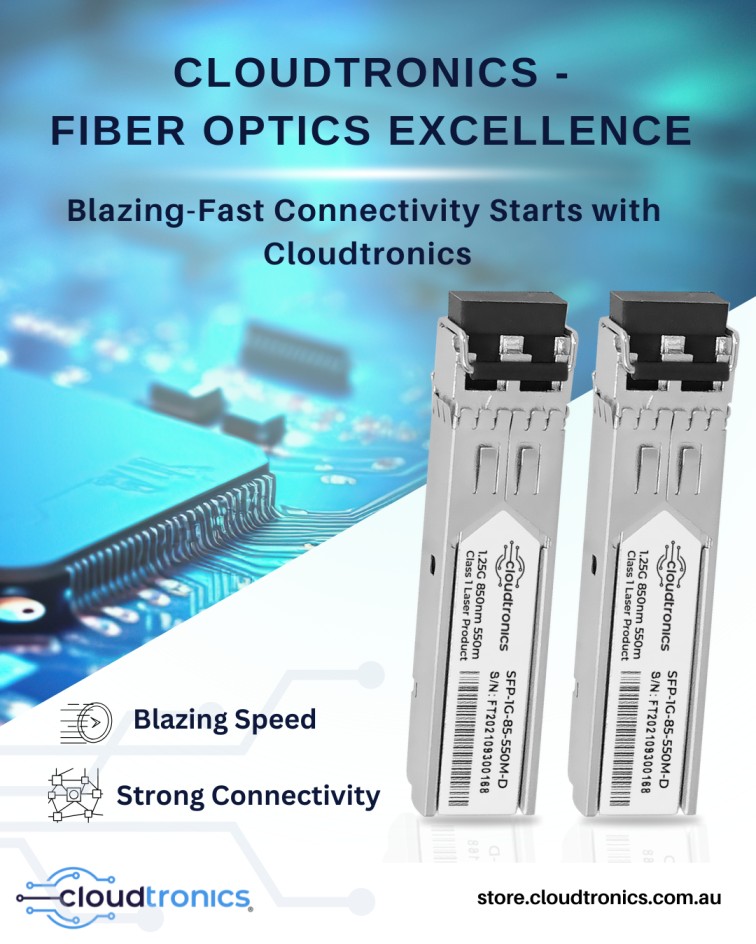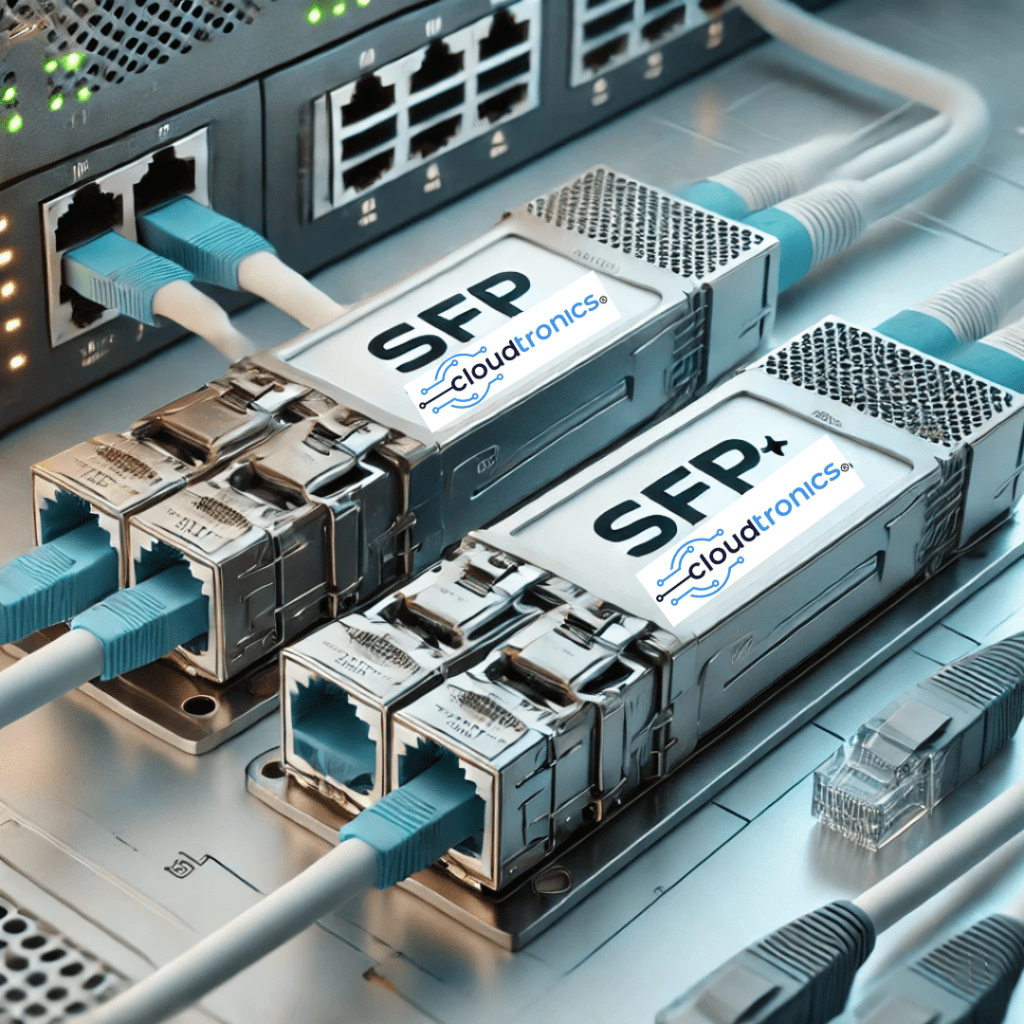SFP connectors play a crucial role in modern networking, helping to transmit data at high speeds while keeping networks flexible and scalable. If you’ve ever wondered what an SFP connector is, how it works, and why it’s important, you’re in the right place! In this guide, we’ll break it all down in simple terms.

What is an SFP Connector?
An SFP connector (Small Form-factor Pluggable) is a compact, hot-swappable transceiver used in network switches, routers, and other telecommunications equipment. It allows devices to connect via fiber optic or copper cables, depending on the type of SFP module used.
Think of it as a small plug that helps different networking devices talk to each other by transmitting data efficiently over long distances.
How Does an SFP Connector Work?
SFP connectors work by housing SFP transceiver modules that handle data transmission. Here’s how it functions in simple terms:
- Insert the SFP Module – The SFP module is plugged into a compatible port on a switch, router, or network device.
- Connect the Cable – A fiber optic or copper cable is attached to the module.
- Transmit Data – The module converts electrical signals into light signals (for fiber optic) or keeps them electrical (for copper) to send data between devices.
This process ensures smooth and high-speed communication within a network.
Types of SFP Connectors
SFP connectors support various types of modules, each designed for specific networking needs. The main types include:
- SFP (Small Form-factor Pluggable)
- Supports data rates up to 1 Gbps
- Works with both fiber optic and copper cables
- Used in Ethernet, Fiber Channel, and SONET networks
- SFP+ (Enhanced Small Form-factor Pluggable)
- Supports speeds up to 10 Gbps
- Mainly used in high-speed data centers and enterprise networks
- QSFP (Quad Small Form-factor Pluggable)
- Supports multiple lanes of data transmission
- Can reach speeds of 40 Gbps or more
- QSFP+ and QSFP28
- QSFP+ supports 40 Gbps, while QSFP28 can handle 100 Gbps
- Ideal for high-performance computing and cloud storage
Choosing the right SFP module depends on your speed and distance requirements.
Fiber Optic vs. Copper SFP Connectors
SFP connectors are compatible with both fiber optic and copper cables. But which one should you use? Let’s compare them:
| Feature | Fibre Optic SFP |
| Speed | Upto 100 Gbps |
| Distance | Upto 100 km |
| Cost | More expensive |
| Interference | No Interference |
VS
| Feature | Copper SFP |
| Speed | Upto 10 Gbps |
| Distance | Upto 30 m |
| Cost | Cheaper |
| Interference | Affected by EMI |
- Use Fiber Optic if you need long-distance, high-speed, and interference-free communication.
- Use Copper SFP if you need a budget-friendly option for short-distance connections.
Why are SFP Connectors Important?
SFP connectors are widely used because they provide:
✅ Flexibility – They support different cable types, so you don’t need to replace the entire switch.
✅ Scalability – Networks can be upgraded by swapping modules instead of replacing devices.
✅ Speed & Efficiency – High-speed data transmission with low power consumption.
They are essential in data centers, enterprise networks, and even telecom providers.
How to Choose the Right SFP Connector?
When selecting an SFP connector, consider:
- Speed Requirements – Choose SFP, SFP+, or QSFP based on your bandwidth needs.
- Cable Type – Decide between fiber optic or copper based on distance and interference concerns.
- Compatibility – Ensure the SFP module matches your switch or router brand (Cisco, HP, Juniper, etc.).
- Distance Coverage – Check if you need short-range (copper) or long-range (fiber optic).
Always check device specifications before purchasing an SFP module to avoid compatibility issues.
Installing an SFP Connector: Step-by-Step Guide
Installing an SFP connector is simple. Follow these steps:
- Turn Off the Device – It’s best to power down your switch or router before installing.
- Insert the SFP Module – Gently push the module into the SFP port until it clicks.
- Connect the Cable – Attach the fiber optic or copper cable to the module.
- Power On & Test – Turn on the device and check the connection status.
- Most modern devices support hot-swapping, meaning you can install or replace the module without shutting down the system.
Common Issues with SFP Connectors & How to Fix Them
- SFP Module Not Detected?
✔️ Ensure it’s fully inserted into the port.
✔️ Check if the module is compatible with your device. - Connection Drops or Slow Speeds?
✔️ Inspect the fiber or copper cable for damage.
✔️ Use the correct SFP module for your network speed. - Excessive Heat from the SFP Module?
✔️ Ensure proper ventilation around networking devices.
✔️ Replace any faulty modules that overheat frequently.
Conclusion
SFP connectors are a vital part of modern networking, allowing devices to communicate at high speeds with flexibility and efficiency. Whether you’re setting up a data center or upgrading your home network, understanding SFP connectors helps you make informed decisions.
By choosing the right SFP module, maintaining proper connections, and troubleshooting issues effectively, you can ensure your network runs smoothly for years to come.
Got more questions about SFP connectors? Drop them in the comments!
Don’t miss the chance to own these advanced solutions. Visit our website or contact us to place your order today!
For more localized information, visit Cloudtronics for different regions:
- Australia: cloudtronics.com.au
- USA: cloudtronics.com
- India: cloudtronics.co.in
- Indonesia: cloudtronics.co.id
To order please visit: store.cloudtronics.com.au
Want to see how SFP can improve your business? Schedule a demo today!
FAQs About SFP Connectors
- Can I use an SFP+ module in an SFP port?
No, an SFP+ module won’t work in a standard SFP port because SFP ports only support speeds up to 1 Gbps. However, some switches allow SFP modules in SFP+ ports, but at reduced speeds.
- Are SFP connectors universal?
Not exactly. While many SFP modules follow industry standards, some manufacturers (like Cisco) have proprietary modules that only work with their equipment.
- What’s the difference between LC and SC connectors in fiber SFP modules?
- LC Connectors – Smaller and commonly used in modern fiber optic networking.
- SC Connectors – Larger and used in legacy fiber networks.
- How far can an SFP module transmit data?
It depends on the module type:
- Copper SFP – Up to 30 meters
- Multimode Fiber SFP – Up to 550 meters
- Single-mode Fiber SFP – Up to 100 kilometers
- Can I mix fiber and copper SFP modules in the same switch?
Yes, as long as your switch supports both fiber and copper SFP modules in different ports.
- How do I clean an SFP connector?
Use a fiber optic cleaning kit to remove dust and debris, ensuring a strong and stable connection.

